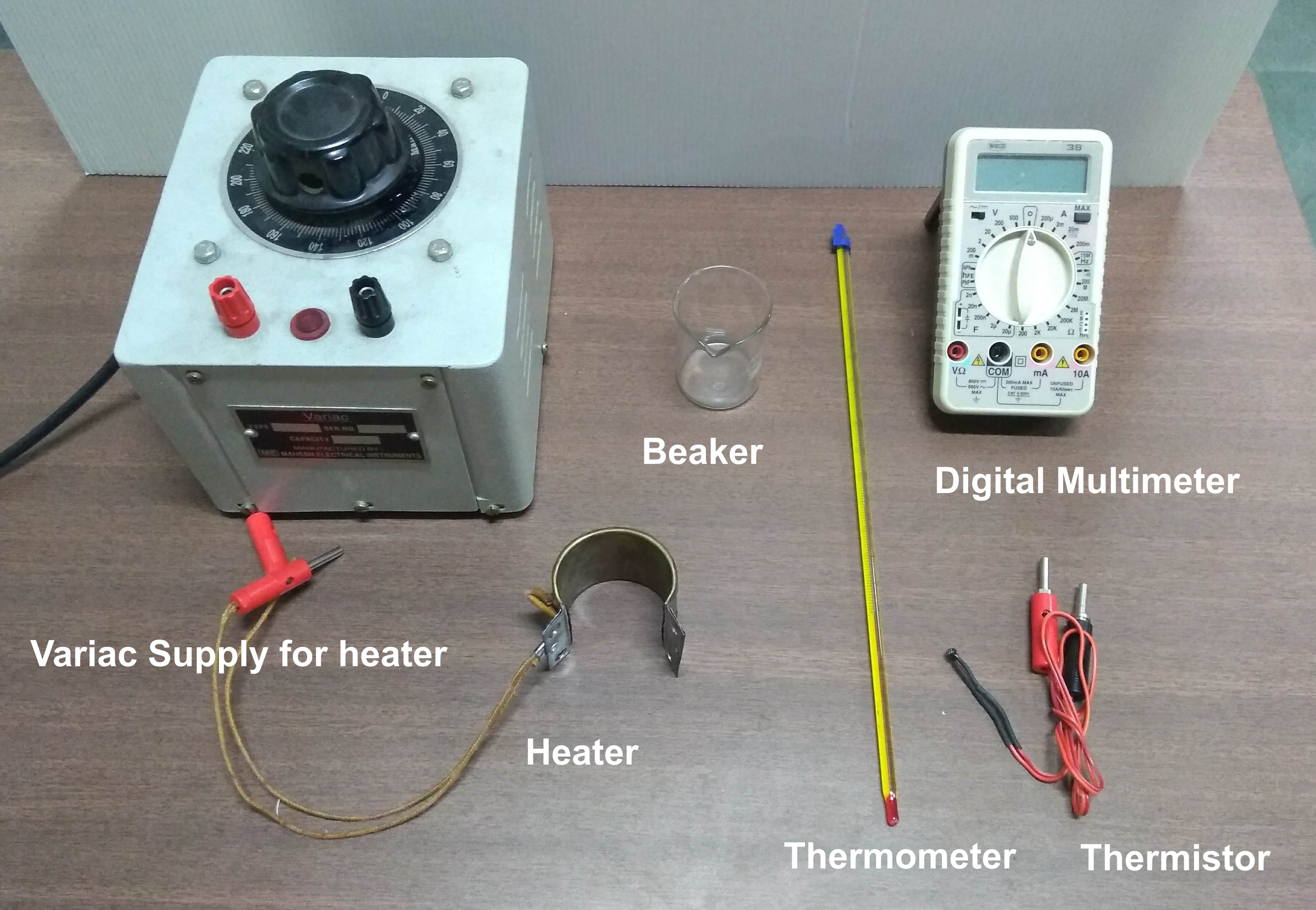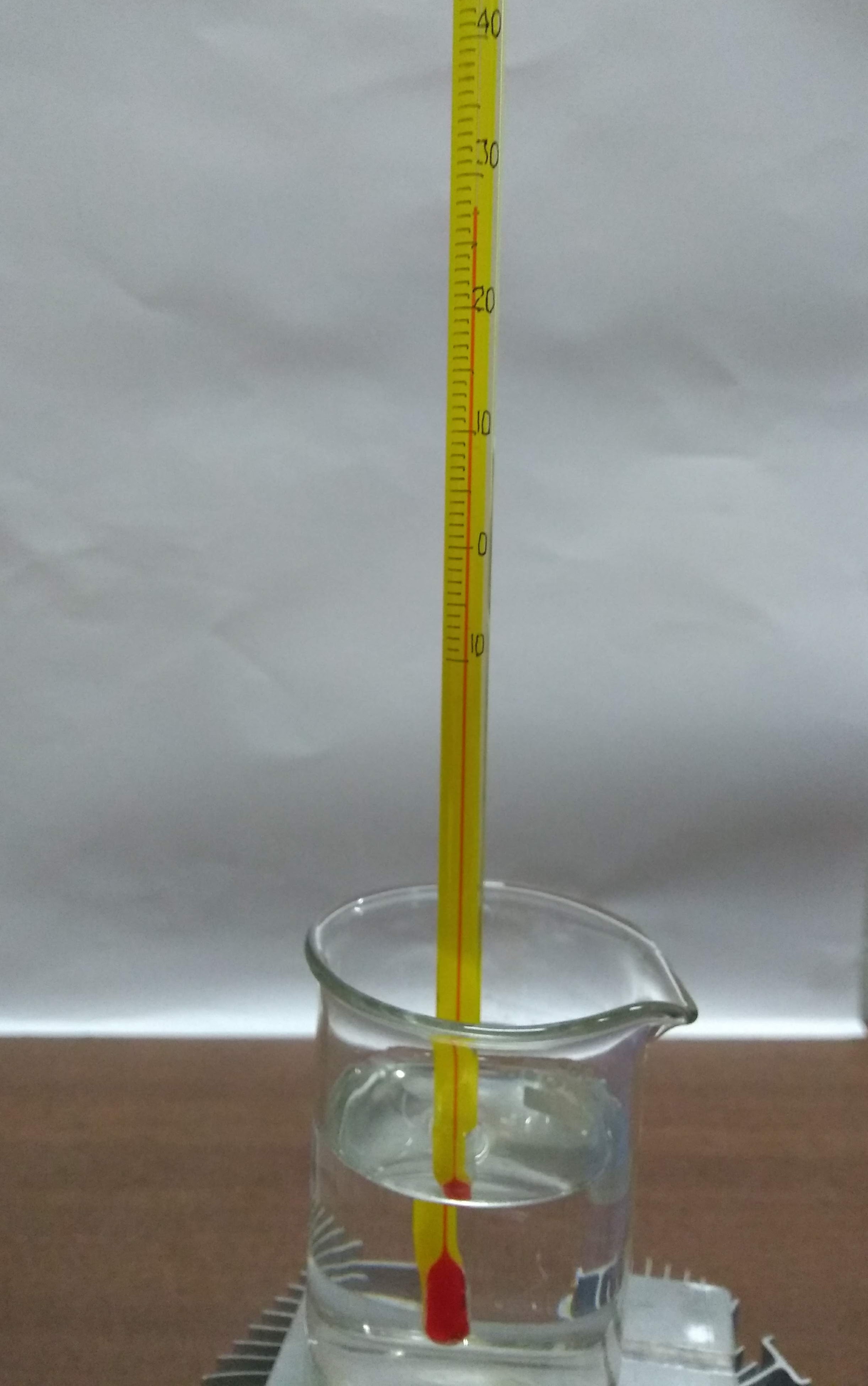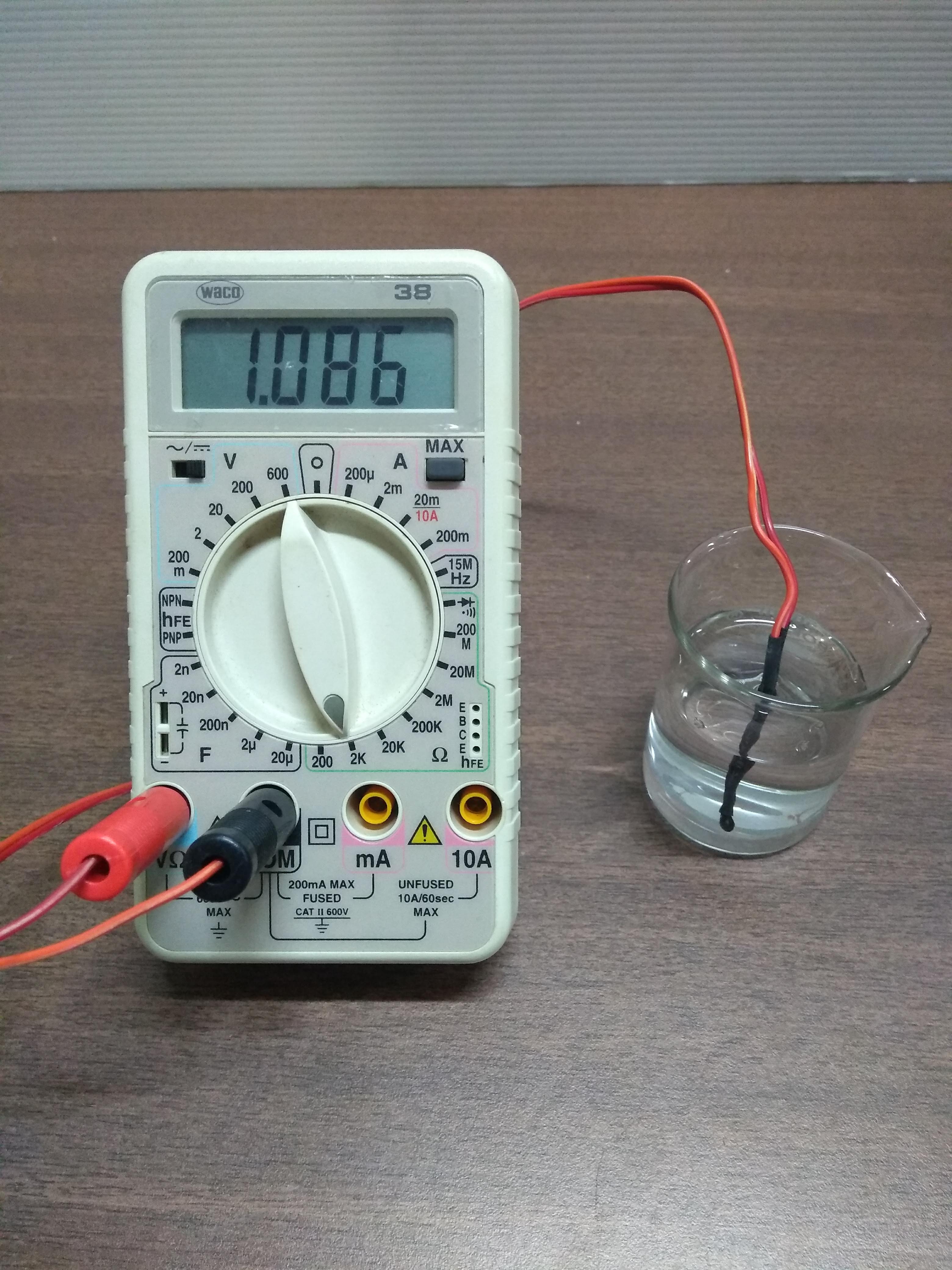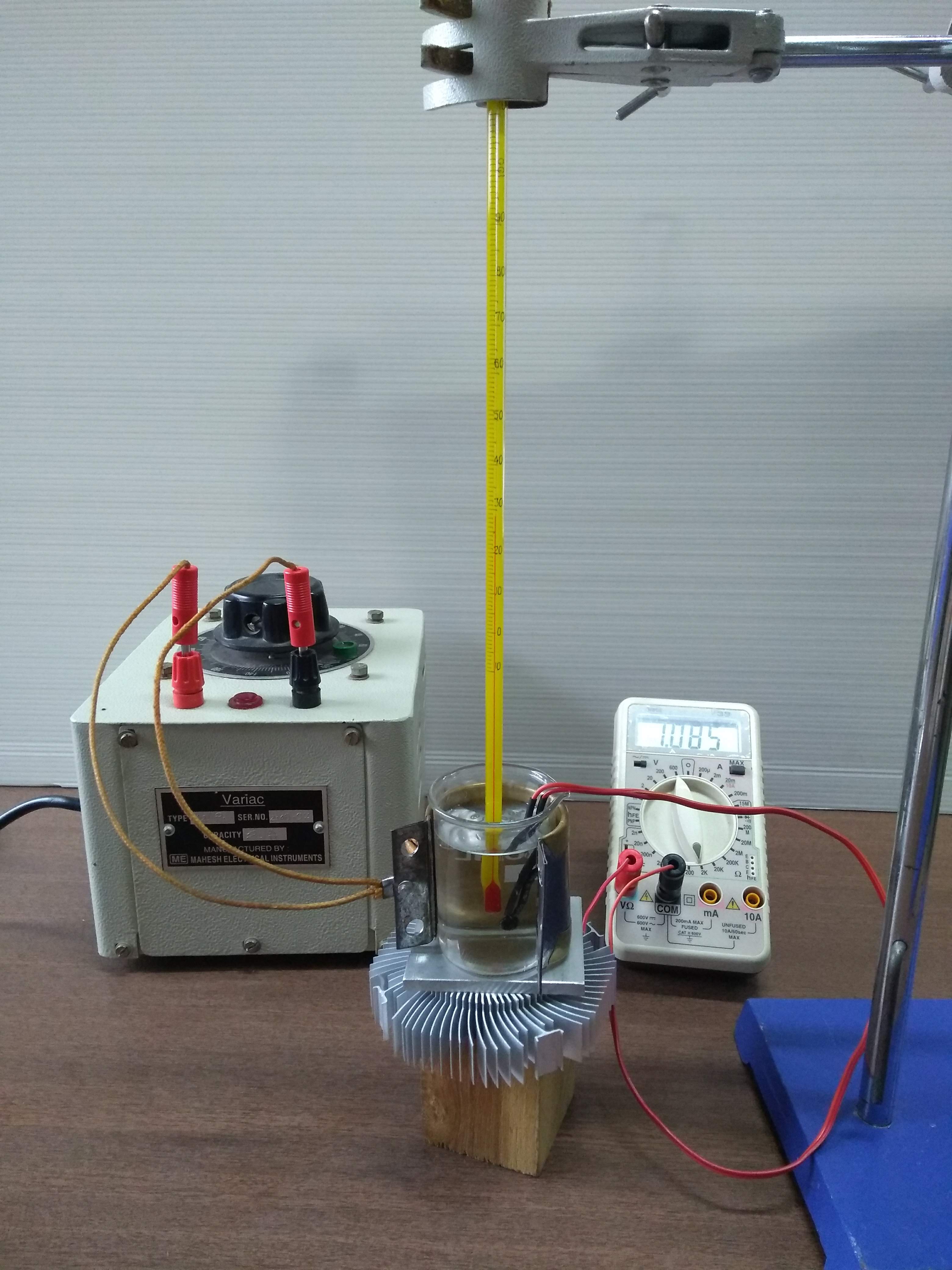Thermistor Characteristics
Objectives: To study the resistance- temperature characteristics of the thermistor.
Apparatus: Thermistor, mercury thermometer, beaker with water, heater assembly, digital multimeter

Introduction:
Thermistors, like resistance temperature detectors (RTD), are thermally sensitive semiconductors whose resistance varies with temperature. Thermistors are manufactured from metal oxide semiconductor material encapsulated in a glass or epoxy bead. Thermistors have either a negative temperature coefficient (NTC) or a positive temperature coefficient (PTC). The first, more common, has a resistance that decreases with increasing temperature while the latter exhibits increased resistance with increasing temperature. Thermistors typically have a very high sensitivity (~200 Ω/°C), making them extremely responsive to changes in temperature.
Procedure:
- Note down the room temperature from mercury thermometer. Insert it in water and note down the initial temperature of water T0. (Click on the image to enlarge)

- Attach two terminals of thermistor to appropriate terminals of digital multimeter to measure resistance of the thermistor. Insert it in water and note down the initial reading of resistance R0. (Click on the image to enlarge)

- Switch on the heater and note down thermistor readings for every 1oC rise in temperature upto 80oC. (Click on the image to enlarge)

- Watch the video and generate the data set for “heating”.
- Once the temperature reaches 85oC, switch off the heater and now take same readings for cooling of water upto initial reading.
- Watch the video and generate the data set for “cooling”.
- Plot the graph for resistance vs temperature.
- Plot the graph for ln(R) vs T and find the calibration equation for the thermistor.
Observations:
T0 = _______________oC
R0 =_______________Ω
Plot a graph between T [X-axis] and ln(R) [Y-axis].
The calibration equation for the thermistor is______________________________